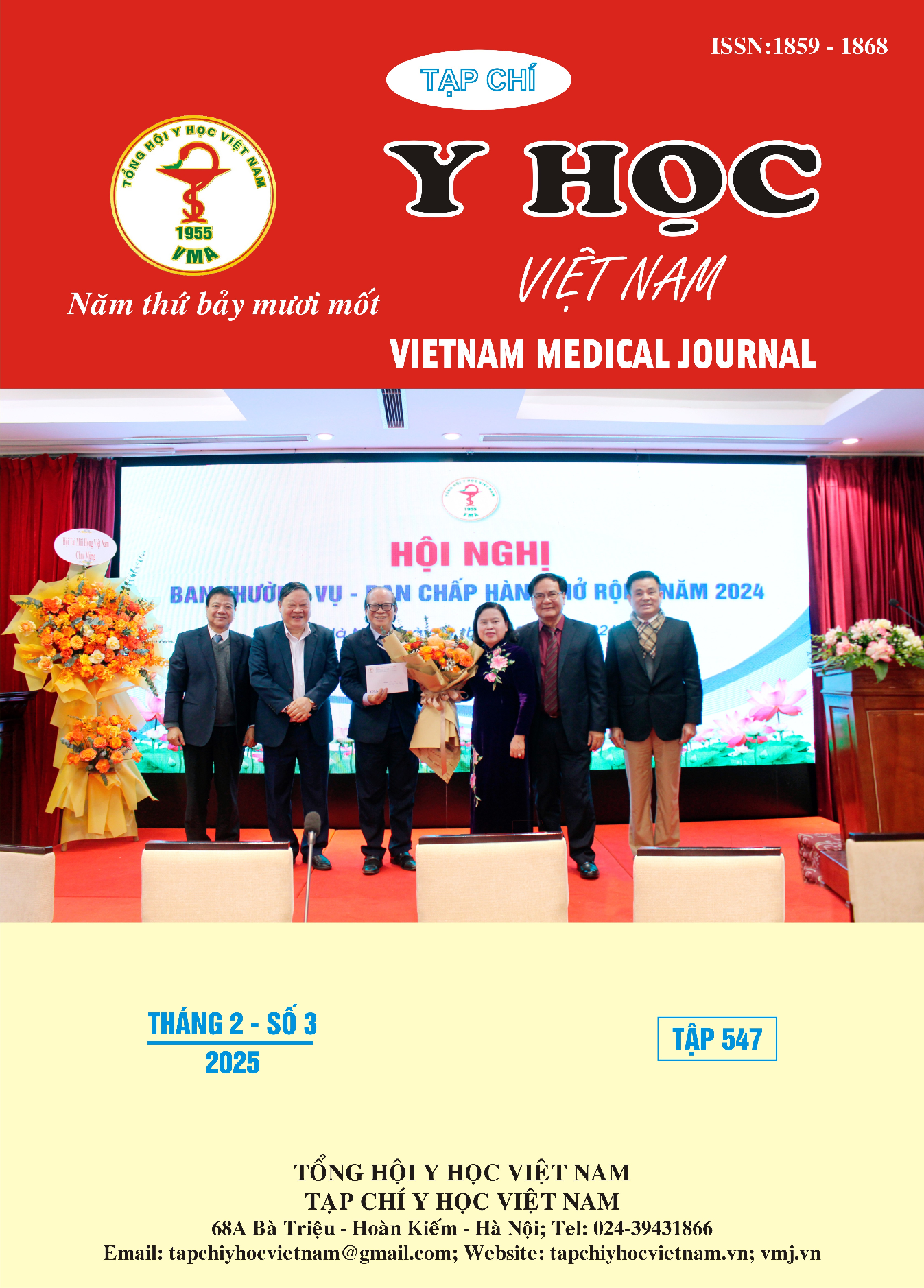NHẬN XÉT KẾT QUẢ ĐIỀU TRỊ THOÁI HÓA KHỚP GỐI BẰNG PHƯƠNG PHÁP TIÊM NỘI KHỚP THUỐC METHYL PRESNISOLONE ACETATE TẠI BỆNH VIỆN ĐA KHOA TỈNH HẢI DƯƠNG
Nội dung chính của bài viết
Tóm tắt
Mục tiêu: Nhận xét kết quả của phương pháp tiêm nội khớp trong điều trị thoái hóa khớp gối nguyên phát tại bệnh viện đa khoa tỉnh Hải Dương. Phương pháp: Thiết kế nghiên cứu can thiệp, tiến cứu, không đối chứng. Gồm 45 bệnh nhân đủ tiêu chuẩn lựa chọn vào nghiên cứu. Cách chọn mẫu thuận tiện. Sử dụng thang điểm VAS, Lequesne và WOMAC đánh giá. Quy trình NC: BN tiêm 01 ống Depo- Medrol 40 mg/ 1 ml x 1 lần duy nhất vào khớp gối thoái hóa (T0). Sau đó BN được theo dõi, hẹn khám lại các thời điểm: Khám cuối tuần thứ 1 (T1), tuần thứ 4 (T4), tuần thứ 8 (T8), tuần thứ 12 (T12). Kết quả: Trong 45 BN có 62.2 % là nữ, nam chiếm 37,8%. Độ tuổi trung bình 60,47 ± 6,71, độ tuổi hay gặp nhất 61-70 chiếm 36,6%. BN có nghề nghiệp lao động chân tay chiếm tỷ lệ cao là 66,7%. Tỷ lệ BN thể trạng béo chiếm 60%, BMI trung bình NC là 23,15 ± 2,16. Triệu chứng cơ năng hay gặp: Đau kiểu cơ học (86.7%), đau khi leo cầu thang (88.9 %), và đau khi chuyển tư thế (93.3%), dấu hiệu phá rỉ khớp (86.7%), dấu hiệu bào gỗ (71,1%). Điểm VAS, Lequesne, WOMAC trung bình trước và sau điều trị các thời điểm khảo sát có sự khác biệt có ý nghĩa thống kê, p < 0.05. Kết luận: 100% bệnh nhân tiêm corticoid nội khớp gối có cải thiện các triệu chứng lâm sàng thể hiện qua sự giảm điểm các chỉ số VAS, Lequesne, WOMAC tại các thời điểm khảo sát theo dõi sau điều trị, p < 0,05. Kiến nghị: Với hiệu quả điều trị bệnh tốt, tương đối an toàn và có chi phí thấp, tiêm corticoid nội khớp gối nên được áp dụng một cách thường qui với thoái hóa khớp gối nguyên phát để đạt hiệu quả cao hơn trên thực hành lâm sàng tại bệnh viện.
Chi tiết bài viết
Từ khóa
thoái hóa khớp gối, tiêm nội khớp
Tài liệu tham khảo
2. Raynauld J. P., Buckland-Wright C., Ward R. et al (2003). Safety and efficacy of long-term intraarticular steroid injections in osteoarthritis of the knee: a randomized, double-blind, placebo-controlled trial. Arthritis Rheum, 48 (2), 370-377.
3. Yavuz U., Sokucu S., Albayrak A. et al (2012). Efficacy comparisons of the intraarticular steroidal agents in the patients with knee osteoarthritis. Rheumatol Int, 32 (11), 3391-3396.
4. Nguyễn Văn Pho (2007). Đánh giá hiệu quả của tiêm chất nhầy sodium-hyaluronate (Go-on) vào ổ khớp trong điều trị thoái hóa khóp gối. Luận văn tốt nghiệp bác sĩ chuyên khoa II.
5. Đỗ Thị Lan và cs (2016). Đánh giá kết quả điều trị của phương pháp chọc hút kết hợp tiêm corticoid nội khớp trong điều trị thoái hóa khớp nguyên phát có phản ứng viêm. Báo cáo khoa học Đại hội thấp khớp học lần thứ XIII, Hội thấp khớp học Việt Nam, tr 87-92.
6. Lê Thị Liễu, Nguyễn Mai Hồng (2009). Nghiên cứu vai trò của siêu âm khớp trong chẩn đoán bệnh thoái hóa khớp gối. Tạp chí Y học Nội Khoa.
7. Kellgren. J.H and Lawrence. J.S (1957). Radiological assessment of osteo-arthrosis. Ann Rheum Dis, 16 (4), 494-502.
8. Arroll.B and Goodyear-Smith.F (2004). Corticosteroid injections for osteoarthritis of the knee: meta-analysis. Bmj, 328 (7444), 869.
9. Chao. C, Wu. B et al (2010). Inflammatory characteristics on ultrasound predict poorer longterm response to intraarticular corticosteroid injections in knee osteoarthritis. J Rheumatol, 37 (3), 650-655


